
Our Adventures in Fiction series is meant to take a look at the writers and creators behind the genre(s) that helped to forge not only our favorite hobby but our lives. We invite you to explore the entirety of the series on our Adventures In Fiction home page.
Adventures in Fiction: Stanley G. Weinbaum
by Ngo Vinh-Hoi
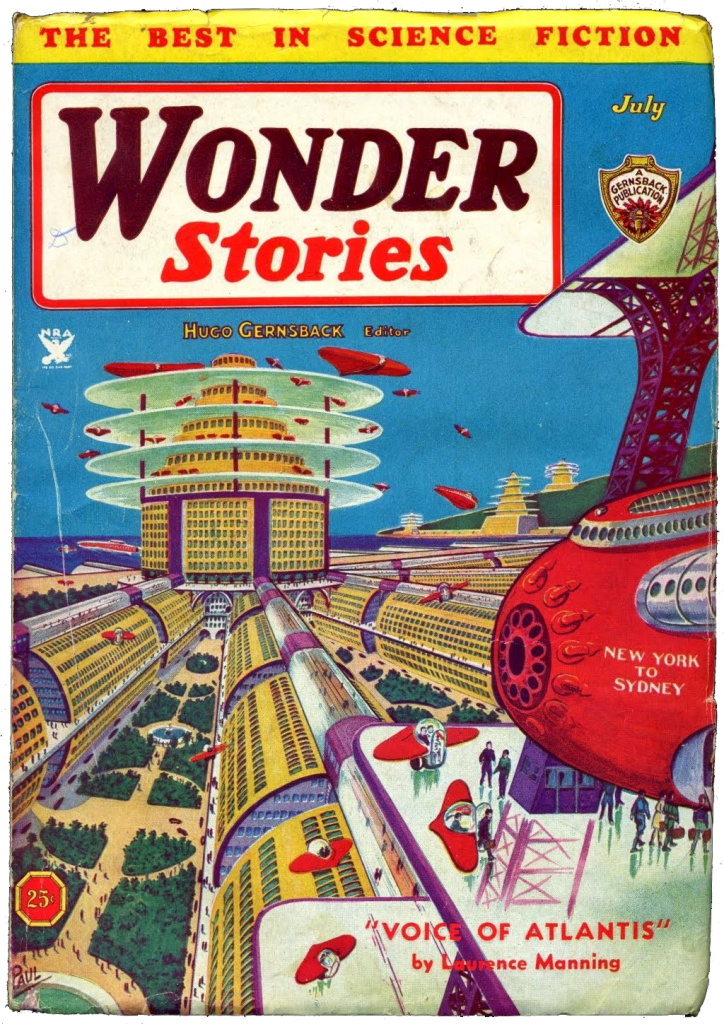
Not many authors can be credited with changing the entire trajectory of a genre, yet Stanley Grauman Weinbaum managed to do so with his very first published science fiction story A Martian Odyssey. The story first appeared in the July 1934 issue of the science fiction pulp magazine Wonder Stories, which was a distant third in popularity to Astounding Stories and Amazing Stories. Forty years later, no less a figure than Isaac Asimov would declare that “hidden in this obscure magazine, A Martian Odyssey had the effect on the field of an exploding grenade. With this single-story, Weinbaum was instantly recognized as the world’s best living science-fiction writer, and at once almost every writer in the field tried to imitate him.”
That’s a lot of weight to place on a short story of a mere 10,000 words but per Asimov A Martian Odyssey presented some of the first alien landscapes and creatures that didn’t exist “only to impinge on the hero, to serve as a menace or as a means of rescue, to be evil or good in strictly human terms—never to be something in itself, independent of mankind.” In Tweel, our human protagonist’s companion on his Martian journey, we have the first intelligent and sympathetic alien that both prefigured and fulfilled Astounding editor John W. Campbell’s long-standing challenge to write “about an organism that thinks as well as a man, but not like a man.” H.P. Lovecraft was also a great admirer of Weinbaum, stating that he “had the imagination to envisage wholly alien situations and psychologies and entities, to devise consistent events from wholly alien motives and to refrain from the cheap dramatics in which all adventure-pulpists wallow.”
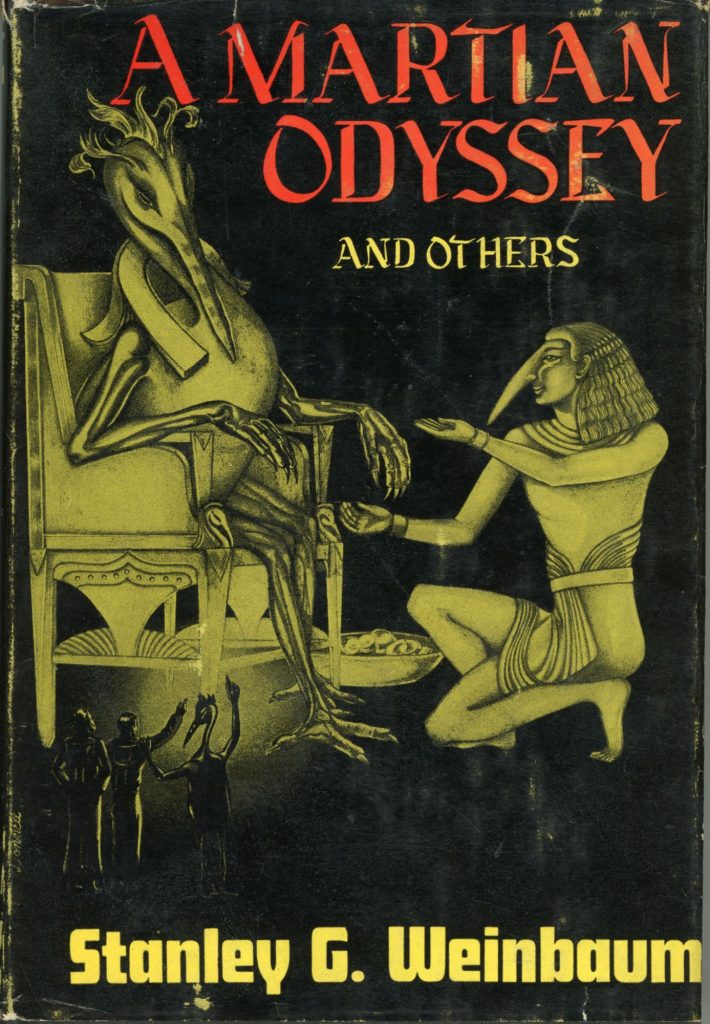
Details about Weinbaum’s early life are thin on the ground, but it is known that he was born on April 4th, 1902 in Louisville, Kentucky and that at some point his family re-located to Milwaukee, Wisconsin where he attended high school and had his first science fiction story The Lost Battle published in the school paper The Mercury in 1917. He then attended the University of Wisconsin-Madison as a chemical engineering major but switched to English due to his love of composing poetry. Weinbaum was a high-spirited type who often forgot his classes, strummed his guitar all day, and wrote poetry and fiction all night, fueled by coffee and cigarettes. He deliberately skipped the university’s mandatory military drill but then taught himself how to pick locks so that he could break into the Armory’s offices once a month to change his attendance records. Weinbaum never finished school, leaving in 1923 when it was discovered that he had taken an exam for a friend on a bet.
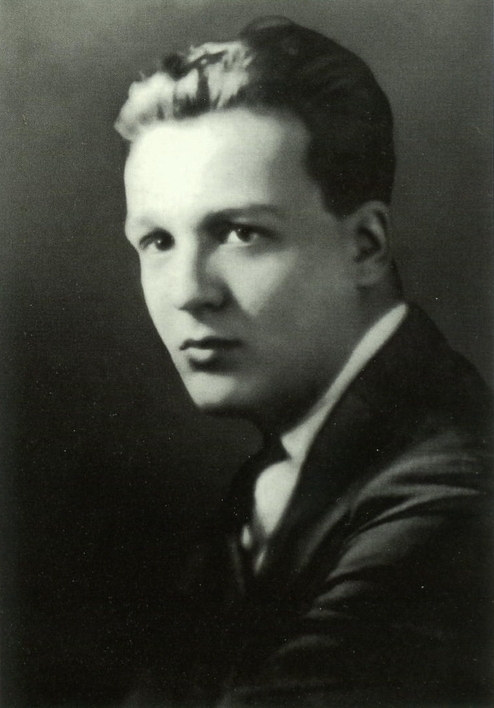
After leaving the university, Weinbaum married Margaret Hawtof and worked in a variety of fields before ending up managing movie theaters at the beginning of The Great Depression. Weinbaum never lost his love of storytelling, joining the Milwaukee Fictioneers, a writer’s club that continues to this day as the Allied Authors of Wisconsin. Other notable Fictioneers included Amazing Stories editor Raymond A. Palmer (namesake of the Silver Age DC Comics character the Atom, co-created by Appendix N writer Gardner F. Fox), Robert Bloch of Psycho fame, and fellow Appendix N authors Fredric Brown and August Derleth.
As The Depression ground on, Weinbaum and his wife took stock of their situation and decided that they had enough money saved for him to take a stab at being a full-time writer. By 1933 Weinbaum had sold a romantic novel called The Lady Rises to King Features Syndicate, which serialized the story in its newspapers nation-wide in early 1934. Weinbaum shopped around several more romance stories without success so he returned to science fiction with “A Martian Odyssey,” which was snapped up by Wonder Stories. Publisher Hugo Gernsback was so taken by Weinbaum’s tale that he immediately requested more stories in a similar vein before A Martian Odyssey even saw print.
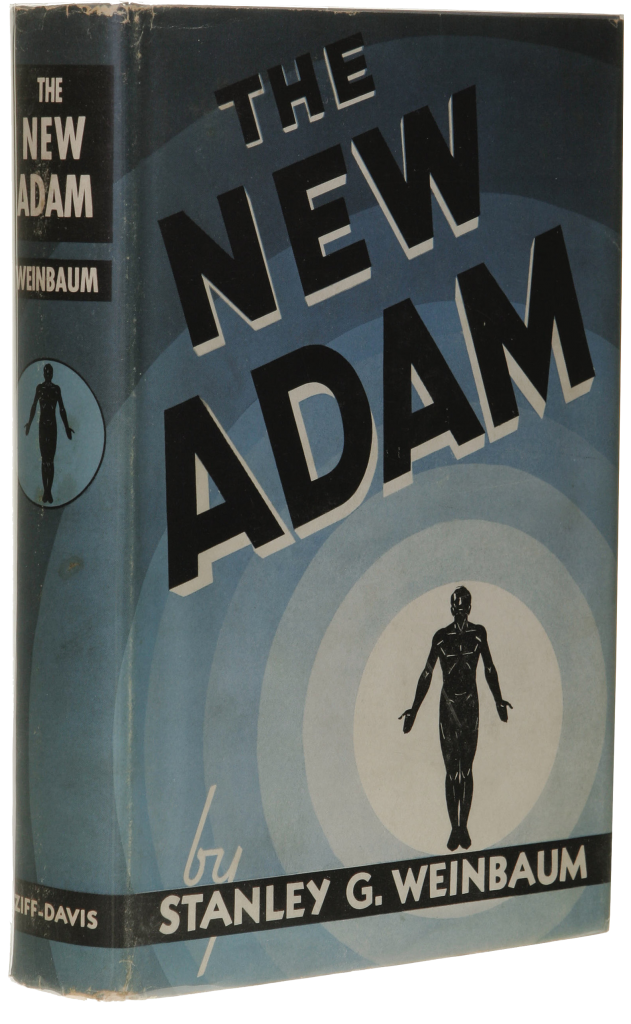
Weinbaum’s subsequent stories would continue to display his aptitude for creating plausible alien creatures and ecologies (Valley of Dreams, Parasite Planet, and The Lotus Eaters), merge mad scientists and absurdist comedy in the Manderpootz stories (The Worlds of If, The Ideal, and The Point of View), and explore the costs of superhumanity and immortality in The Adaptive Ultimate and the novels The New Adam (1939) and The Black Flame (1939).
Sadly, Weinbaum was diagnosed with throat cancer just as his career was hitting its stride. He died on December 14th, 1935 only 18 months after bursting onto the science fiction scene and changing it forever. He had a dozen short stories published in his lifetime, and another dozen or so stories and three novels were published posthumously.
Weinbaum’s stories remained enormously influential on his fellow science fiction writers despite limited availability for the next 30 years. So-called “Campbellian” hard science fiction might never have been viable without Weinbaum’s work to pave the way. Weinbaum never wrote in the coolly technocratic and often xenophobic style often associated with hard science fiction—Robert Bloch would recall Weinbaum workshopping his stories at Fictioneers meetings as “an object lesson in the art of inducing empathy….[in] empathy he had found the weapon to destroy the Bug-Eyed Monster, once and for all.”
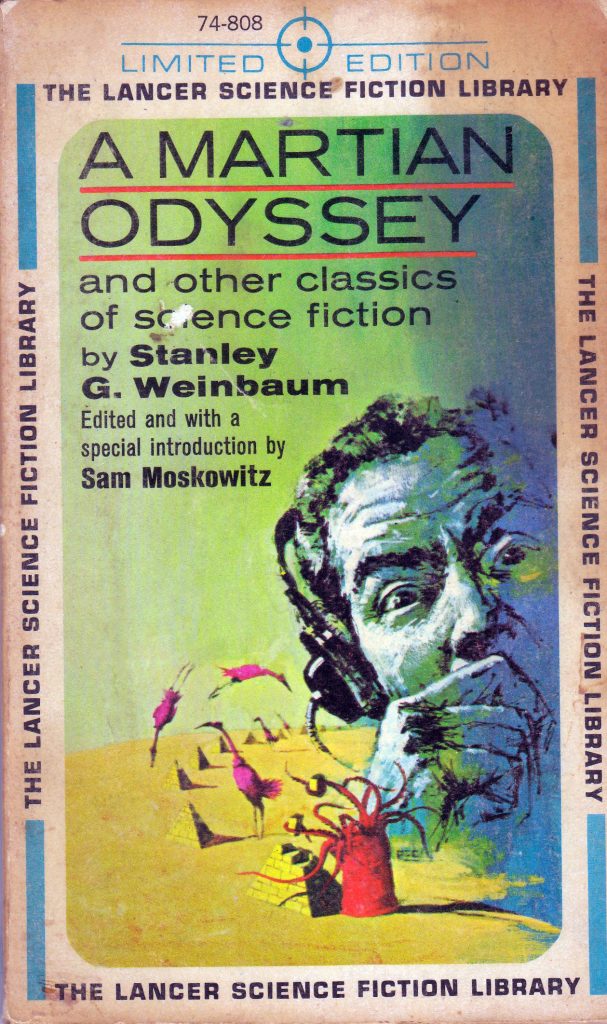
It’s likely that Gary Gygax discovered Weinbaum’s work when the latter’s popular revival began in the early 1960s with the slim collection A Martian Odyssey and Other Classics of Science Fiction (Lancer Books, 1962). That revival was capped with the publication The Best of Stanley G. Weinbaum (Ballantine Books, 1974) which launched the famed Ballantine/Del Rey “Best of…” series. Weinbaum’s skill at creating plausible if weird creatures and ecologies is an obvious underpinning to the naturalistic worldbuilding of Gygaxian Dungeons & Dragons. Mimics, vegepygmies, and modrons are nothing if not Weinbaum-ian. If you’d like to see for yourself, you can easily find all of Weinbaum’s solo science fiction at Project Gutenberg or other public domain book sources.
And be sure to visit our Adventures in Fiction home page to read about the classic authors of Appendix N!
Stay connected with us on social media platform for instant update click here to join our Twitter, & Facebook
We are now on Telegram. Click here to join our channel (@TechiUpdate) and stay updated with the latest Technology headlines.
For all the latest Gaming News Click Here
